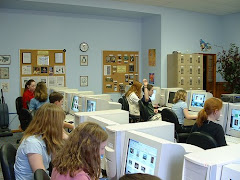
Overall, this blog is an example of an authentic activity and online learning.
In our Module, our introduction explained the content, provided an overview of the module, and stimulated interest in the module.We used both full-text and multimedia resources.
Evaluation, involved the discrimination and comparison between ideas or assessing the value of theories or presentations.
High degree of interaction promoted between students, content, and design team.
Development of higher order thinking skills, students encouraged to produce knowledge, and there was a clear and direct relationship between the objectives, activities and resources provided.
The assignment was related to the objectives and activities, was stimulating, interesting and creative, promoted presentation of resources, and stimulated students to create new knowledge.
The evaluation scheme was clear and well described, consistent with the objectives and instructional strategy utilized, and showed evidence of creativity in its approach.
Our team responded to the discussion items posted.
The synthesis and summary of both the discussion forum postings as well as the chat sessions dialogue were comprehensive and totally related to the objectives of the content module.
Leadership role in the design, development and delivery of our group’s module.
Overall, the design, development and delivery process of our team’s content module demonstrated a superior level of effort, creativity, knowledge and application of skills.
References:
Bloom, B. S. and Krathwohl, D.R. (1956). Taxonomy of Educational Objectives: The Classification of Educational Goals, Handbook I: Cognitive Domain. New York: Longmans, Green.
Bruce, F. and Dodson, E. (2001) Technology and the Human Spirit: Confronting the New Millenium. [Electronic Version]. Association of Humanistic Psychology. Retrieved Jan. 18th, 2006 from http://www.ahpweb.org/involve/centers/technologyandspirit.html
Conway, Judith (1997) Educational Technology's Effect on Models of Instruction [Electronic Version]. Retrieved Jan. 20th, 2006 from http://udel.edu/~jconway/EDST666.htm
Eisner, E. W. (1985). The Art of Educational Evaluation, Lewes: Falmer Press.
Eisner E. W. and Vallance E. (1974). Conflicting Conceptions of Curriculum, Berkeley, CA: McCutchan.
Eisner, E. W. (1979). The educational imagination. New York: Macmillan.
Gardner, Howard (1999) Intelligence Reframed. Multiple intelligences for the 21st century, New York: Basic Books.
Gendron, B. (1977) Technology and the Human Condition, NY: St.Martin. p. 23
Ghaoui, C. (2004). E-Education Applications: Human Factors and Innovative Approaches. Hershey PA: Idea Group Inc.
Magoulas D. G. and Chen, S.Y. (2006). Advances in Web-Based Education: Personalized Learning Environments. (London: Idea Group Inc.)
McNeil, J. D. (2006). Contemporary Curriculum: In Thought ad Action, 6th Edition. Boston, MA: Little-Brown.
Motschnig-Pitrik, R. and Holzinger, A. Student-Centered Teaching Meets New Media: Concept and Case Study Educational Technology & Society 5 (4) 2002 at 3. [Electronic Version]. Retrieved Jan 18,th 2007, from http://ifets.ieee.org/periodical/vol_4_2002/renate.html
Panitz, T. (2001). Learning Together: Keeping Teachers and Students Actively Involved by Writing Across the Curriculum A Source Book of Ideas and Writing Assignments. Stillwater, Oklahoma: New Forums Press.
Roberts, Tim S. (2004) Online Collaborative Learning: Theory and Practice (London: Idea Group Inc.)
Schwier, R., and Misanchuk, E. N. (1993). Interactive Multimedia Instruction. CA: Englewood Cliffs.
Wasson, B., Ludvigsen, S., and Hoppe, U. (Ed.). (2003). Designing for Change in Networked Learning Environments, Proceedings of the International Conference on Computer Support for Collaborative Learning. Computer –Supported Collaborative Learning. Netherlands: Kugler Academic Publishers.
White, J.A. and Purdom, D. A. (n.d.) Viewing Modern Instructional Technology through Conceptions of Curriculum [Electronic Version]. Retrieved Jan 18,th 2007, from http://gozips.uakron.edu/~jsavery/emerging/it-and-curriculum.htm















No comments:
Post a Comment